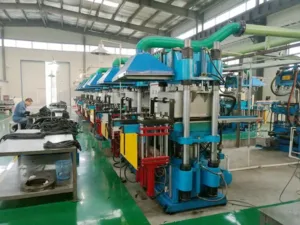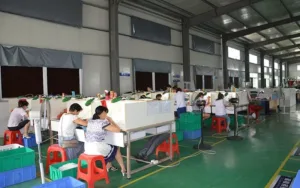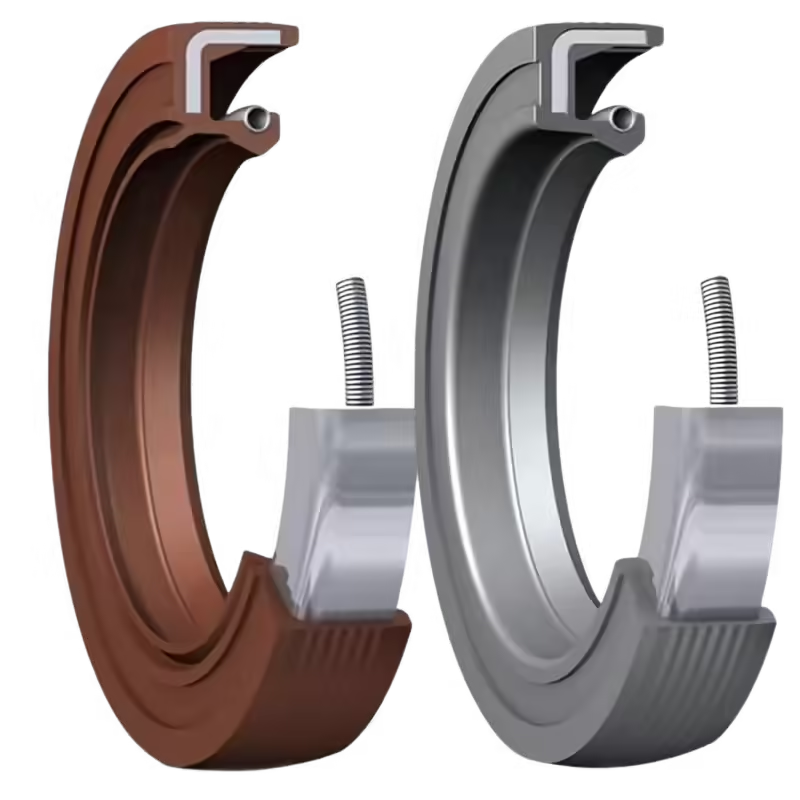What Advantages Do Chinese Seal Ring Manufacturers Have Over Their Vietnamese Counterparts?
Introduction
The global seal ring manufacturing industry plays a crucial role in various sectors, including automotive, construction, and machinery. Among the key players in this market are China and Vietnam, both of which have established themselves as significant contributors to the production and supply of seal rings. The importance of seal rings lies in their ability to ensure the integrity and efficiency of mechanical systems across different industries.
In recent years, the escalating China-US trade war has significantly impacted global manufacturing dynamics. This geopolitical tension has led many Chinese companies to consider relocating their manufacturing operations to Vietnam, attracted by favorable tax incentives and the potential for cost savings. However, this shift has introduced new challenges and opportunities for both Chinese and Vietnamese manufacturers in the seal ring market.
1. Manufacturing Scale and Production Capacity
China’s Established Industry: China boasts large-scale production facilities equipped with advanced machinery and cutting-edge technology. This extensive infrastructure allows Chinese manufacturers to handle large-volume orders efficiently, meeting the demands of global markets with ease. Additionally, China’s well-established supply chain networks support rapid scaling, ensuring that manufacturers can quickly adjust to market fluctuations and increased demand.
Vietnam’s Smaller Scale: In contrast, Vietnam’s production capacity remains limited, with smaller facilities that may struggle to meet large-scale demands. While the country offers tax incentives that have attracted some Chinese companies to establish factories, many of these facilities lack comprehensive machinery, resulting in less efficient production processes.
Impact on Lead Times and Cost Efficiency: China’s ability to offer faster delivery and cost-effective mass production remains a significant advantage. Vietnamese manufacturers, on the other hand, face higher lead times and production inefficiencies due to their smaller scale and less integrated manufacturing setups.
2. Technological Advancements and Innovation
Chinese Technological Superiority: Chinese manufacturers have made substantial investments in cutting-edge technology and automation, enhancing their production processes’ efficiency and precision. Continuous innovation in materials, production techniques, and design flexibility allows Chinese manufacturers to produce high-quality seal rings that meet diverse industry requirements.
Vietnam’s Technological Limitations: Vietnamese manufacturers often rely on traditional manufacturing methods, resulting in slower adoption of new technologies. Limited resources allocated to research and development further hinder their ability to innovate and improve production techniques.
Impact on Quality and Precision: The technological advancements in China translate to higher precision and better quality control in seal ring production. Vietnamese manufacturers may encounter challenges in producing highly complex designs or maintaining specific tolerances, particularly in factories that are not fully equipped with the latest machinery.
3. Raw Material Availability and Cost
China’s Advantage in Raw Material Sourcing: China’s proximity to global raw material suppliers and well-established procurement networks provide a significant advantage in sourcing high-quality materials at competitive prices. This strong position in the global supply chain allows Chinese manufacturers to maintain cost-effective production processes.
Vietnam’s Raw Material Constraints: Vietnam faces limitations in accessing domestic raw material suppliers, necessitating higher costs for imported components. Reliance on imports for essential materials like rubber and metal components also makes Vietnamese manufacturers vulnerable to supply chain disruptions.
Effect on Pricing: China’s efficient raw material sourcing enables manufacturers to offer more competitive pricing. Conversely, higher raw material costs in Vietnam lead to increased production costs, making it challenging for Vietnamese manufacturers to compete on price.
4. Labor Force and Cost Efficiency
China’s Skilled Workforce: China benefits from an abundant supply of skilled labor with expertise in seal ring production. Despite rising wages, competitive labor costs remain advantageous for large-scale operations, ensuring cost-efficiency without compromising on quality.
Vietnam’s Growing Workforce: While Vietnam offers lower labor costs, there may be trade-offs in terms of skill level and training. The workforce in Vietnam may lack the depth of experience and technical expertise found in Chinese manufacturing, potentially impacting production quality and efficiency.
Implications for Quality and Speed: China’s highly trained workforce ensures faster production times and consistent quality. In contrast, the lack of trained professionals in Vietnam can result in lower-quality products and delays in production, affecting overall efficiency and reliability.
5. Supply Chain Infrastructure
China’s Comprehensive Supply Chain: China’s advanced logistics, transportation networks, and infrastructure support efficient global shipping. Well-developed ports, highways, and rail networks facilitate the swift movement of goods, enhancing overall supply chain efficiency.
Vietnam’s Emerging Infrastructure: Vietnam’s infrastructure is still developing, facing challenges in global logistics and supply chain efficiency. Ports and shipping routes in Vietnam may not be as optimized or cost-effective as those in China, potentially leading to delays and increased transportation costs.
Impact on Delivery and International Trade: China’s superior infrastructure ensures faster and more reliable international shipments, a critical factor for global trade. Vietnamese manufacturers may experience delays in transportation and customs processes, negatively impacting delivery times and customer satisfaction.
6. Quality Control and Product Consistency
China’s Established Quality Standards: Chinese manufacturers adhere to rigorous quality control processes that meet international certifications and standards, such as ISO and ASTM. This commitment to quality ensures consistent and reliable product output, essential for industries like automotive, aerospace, and industrial machinery.
Vietnam’s Challenges with Quality Control: Many Vietnamese factories lack the established quality control systems seen in China. Without experienced managers and technical experts in production and quality assurance, Vietnamese manufacturers may produce inconsistent quality products, undermining their competitiveness in the global market.
Current Situation: While some Chinese companies have relocated to Vietnam, maintaining high-quality standards remains a challenge, especially in factories lacking experienced staff familiar with the intricacies of seal ring production.
7. Competitive Pricing and Cost Considerations
Cost Efficiency in China: China’s large-scale production, efficient supply chain, and access to raw materials enable manufacturers to keep prices competitive despite rising wages. This cost efficiency makes China the most cost-effective option for large-scale, high-quality seal ring manufacturing.
Vietnam’s Cost Structure: Although Vietnam offers lower labor costs, the absence of a full supply chain, limited machinery, and a less experienced workforce result in higher overall manufacturing costs. Many Vietnamese factories are still developing, impacting both pricing and their ability to meet demand efficiently.
8. DRO’s Competitive Advantage
Differentiation in Global Markets: DRO Rubber, based in China, leverages a fully integrated supply chain to ensure high product quality, timely delivery, and customization options. This integrated approach allows DRO Rubber to cater to diverse customer needs effectively.
Customer-Centric Approach: For orders exceeding USD 20,000, DRO Rubber offers clients the option to customize logos and packaging, providing a unique edge in the global market. This personalized service enhances customer satisfaction and strengthens brand loyalty.
Commitment to Excellence: With a fully equipped factory and a complete supply chain in China, DRO Rubber can meet a wide range of customer demands, ensuring exceptional quality and service. By harnessing China’s industrial resources, DRO stands out in an increasingly competitive market.


Conclusion
Chinese seal ring manufacturers hold significant advantages over their Vietnamese counterparts in areas such as manufacturing scale, technological advancements, raw material sourcing, skilled labor force, and comprehensive supply chain infrastructure. These factors collectively contribute to higher quality control and product consistency, which are critical in the seal ring manufacturing process.
DRO Rubber exemplifies these advantages through its integrated supply chain and unwavering commitment to product excellence. By maintaining high standards and offering tailored solutions, DRO Rubber is well-positioned to meet diverse customer demands and maintain a competitive edge in the global market.
For more information, please visit our website at drorubber.com or contact us via WhatsApp: +0086 15815831911 or WeChat: +0086 13784044874.





